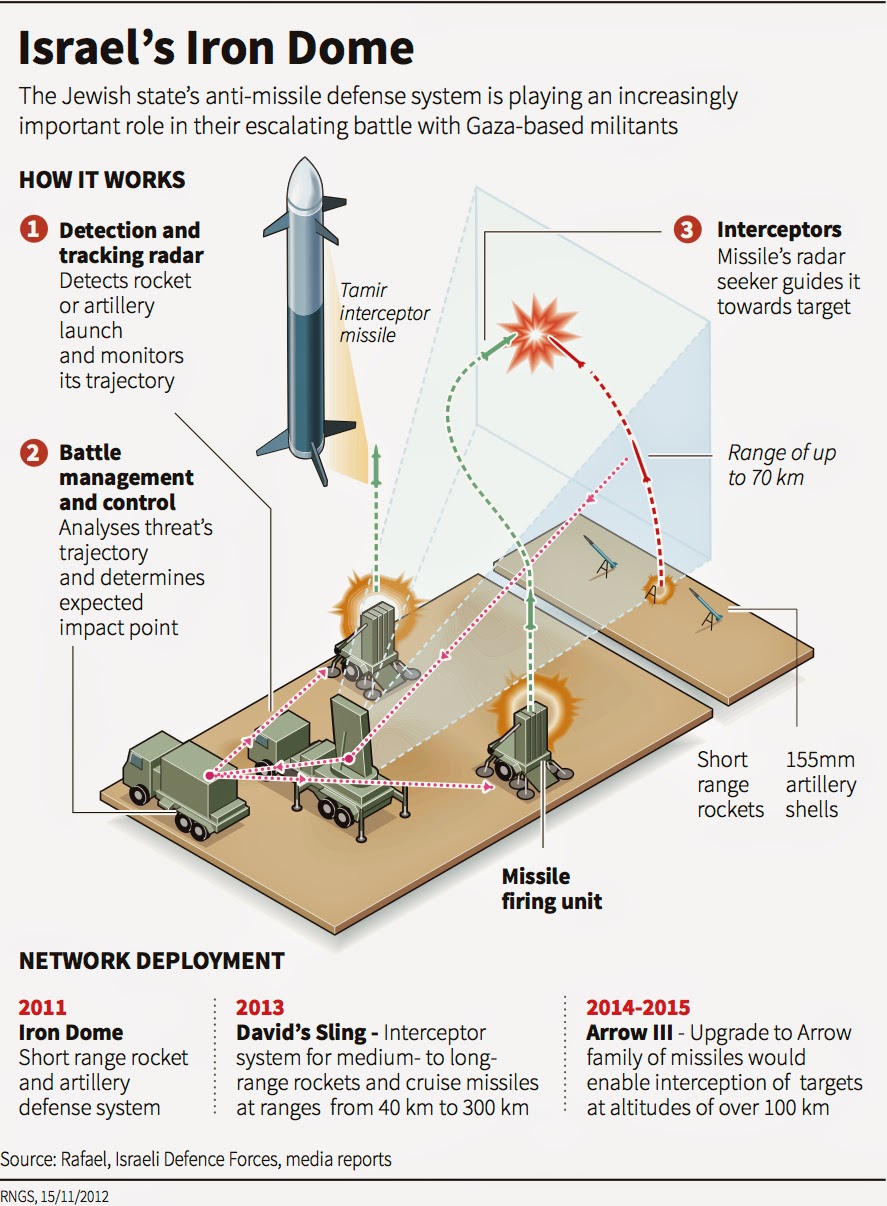 |
| An Israeli missile is launched from the Iron Dome |
On July 29 Gaza felt the heaviest air
and artillery assault from Israel, destroying key symbols of Hamas control,
shutting down the territory’s only power plant and leaving at least 128
Palestinians dead on the 22nd day of the war. It is by far the
deadliest day of the on going fighting.
As of the time of writing, 1, 229
Palestinians already perished, 7, 000 have been wounded and hundred thousands
were displaced, majority of them are civilians. In comparison, Israel says it has
lost 53 soldiers, 2 Israeli civilians and a Thai national.
The number of casualties will surely
increase in the coming days as the Israel’s Prime Minister Benjamin Netanyahu
warned Israelis to be prepared for a “prolonged war”.
But despite the heavy Palestinian
losses, Deif, the commander of the Hamas military wing, said the fighting would
continue. "There
is not going to be a cease-fire as long as the demands of our people are not
fulfilled," he said.
Though Israel has the better military, technology, equipment, and engineering capabilities, Hamas is still capable of wreaking havoc on its enemy. They have
stockpiled of short and middle range rockets smuggled from their supporters,
mainly Lebanon and Iran. But one of the main reason Hamas only inflicted a
small number of Israeli fatalities is the Israel’s prominent Iron Dome.
Iron
Dome is a
mobile all-weather air defense system developed by Rafael
Advanced Defense Systems. The system is designed to intercept and
destroy short-range rockets and artillery shells fired from
distances of 4 kilometres (2.5 mi) to 70 kilometres (43 mi) away and
whose trajectory would take them to a populated area. Israel hopes to
increase the range of Iron Dome's interceptions, from the current maximum of 70
kilometres (43 mi) to 250 kilometres (160 mi) and make it more
versatile so that it could intercept rockets coming from two directions
simultaneously.
 |
| How the Iron Dome works |
Iron Dome was declared
operational and initially deployed on 27 March 2011 near Beersheba. On
7 April 2011, the system successfully intercepted a Grad rocket launched
from Gaza for the first time. On 10 March 2012, The
Jerusalem Post reported that the system shot down 90% of rockets
launched from Gaza that would have landed in populated areas. By November
2012, official statements indicated that it had intercepted 400+ rockets. On
19 November, defense reporter Mark Thompson wrote that while these
numbers were impossible to confirm, the "lack of Israeli casualties
suggests Iron Dome is the most-effective, most-tested missile shield the world
has ever seen."
Though with some weaknesses as explained
on this article, Yair Ramati, the director of the Homa Administration
within Israel’s defense ministry, said that Iron Dome has improved
significantly since its first use in 2011, staying “one step ahead of the
enemy.” But he said that Hamas is constantly probing the system for weaknesses.
The nightmare scenario for
Israel would be Hamas or other foe equipped with cruise missiles that can twist
and turn in flight to evade interceptors. Or, perhaps sooner, a simultaneous
launch of so many rockets that Iron Dome can’t shoot them all down.
But let’s just hope that both parties
will reach a cease fire sooner rather than later.
Sources:



.jpg)


